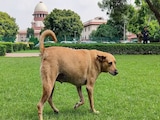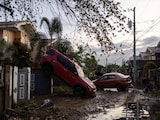COVID-19: Dr Gagandeep Kang explains what we know so far about Omicron
India's top biomedical scientist Dr Gagandeep Kang explains what could be the factors that make the new coronavirus strain, Omicron, a variant of concern. Omicron has more mutations than any other variant seen in the past, Dr Kang told NDTV.
Here are 5 key points on Omicron from Dr Gagandeep Kang:
- "The mutations are several, and they are located in regions of the surface of the virus that are responsible for the binding of the virus and also at places where antibodies bind. Further than that there are also mutations in areas where we know that 'T cells' respond to the virus. There are hundreds of regions where 'T cells' bind. And the mutations so far in modelling are in half a dozen places. But all of this taken together is very concerning because we have clearly greater transmissibility and potentially immune escape."
- "If we look at 'R naught' of viruses, the ancestral Wuhan variant had an 'R naught' of somewhere around 2.5 and Delta (variant) is estimated to be around 6.5 and 8. There are estimations that this variant (Omicron) could be potentially several times Delta. I think that is unlikely to be the case, but it does seem like this is a very transmissible variant. Measles, for example, has an 'R naught' of 15 and is the most infectious virus we know. (Omicron) should be somewhere between 8 and 15. If it is greater than 15, then it is going to be a virus that will infect practically everybody who comes in contact with." ('R naught' broadly means for every 1 person infected, the number of people who could get the infection from that person).
- "Fortunately, in India, we have a small advantage because a lot of our people were infected before they were vaccinated. And we know that a combination of vaccination and infection gives you the broadest possible immune response. So we may be lucky there."
- "I am not much worried about people who have been vaccinated getting infected. That's important for transmission and spread of the virus, obviously. The question is in terms of disease, are the people who have been vaccinated doubly or triply, are they sick with the virus? So far the data that we have from those individuals who have a history of vaccination appears to show they were either asymptomatic or had mild infection. But this is something we need to watch for."
- "Greater transmissibility doesn't necessarily mean greater severity. Some of the most transmissible viruses we have do not cause severe disease. So if we are lucky, this (Omicron) may wind up being a very transmissible one but not severe. For example, back to H1N1, very transmissible virus, but fortunately not as severe as many other influenza viruses."
Advertisement














